You rock that body. You get that body movin’. You shake ya body. Work that body. But do you hear your body talk? Working out isn’t always easy. There is usually some discomfort in order to make some progress. However, pushing too hard can bring on injuries. It is time to listen to your form, as your body is a wonderland and you’ve only got the one. Here are some ways to speak your body’s language and make sure it’s just as happy with your workout as you are.
Say Uncle
‘No Pain No Gain’ is a cute slogan, but you can’t keep up your routine if you’re in traction. While you have to work through soreness in order to take your routine to the next level, you should never be in actual pain. Sharp pain means potential injuries, which means you are spending your weekends on the couch rather than on the court.
There is no such thing as a good pain. Pain is the result of trauma: disease based, e.g. accident based and exercise based. Of the three, exercised based can be treated successfully. Exercised based pain is usually inflammation mediated. Inflammation causes the pain and induces muscle degradation. To get the most out of exercise, inflammation/pain needs to be minimized. The best approach is to eat a diet of low inflammatory foods (minimize sugars, carbohydrates and omega 6 pro-inflammatory fats). Eat a diet with vegetables, fiber, protein, good fats (coconut medium chain fats and omega 3 fats (EPA and DHA) derived from fish oil. All of the above will tend to decrease the load on inflammatory mediatoras that are released after an intense exercise period.
How do you differentiate between bending and breaking? According to Web MD, DOMS or delayed onset muscle soreness refers to the increasing pain or discomfort that begins about 24 to 48 hours after a tough workout. This is a normal occurrence and not a cause for alarm. It is a sign of the tiny tears in the muscle, the inflammation from those tears, and the repair of that muscle. In fact, it can even be a sign that you are building strength. There are ways to alleviate this soreness. Stretching after a workout helps, as well as light exercise on off days like yoga, walking, or swimming. Plus, treating the source with heat wraps will relieve the ache.
If you have a pain more severe than achiness it should give you pause. The general rule according to Carol Torgan of the American College of Sports Medicine, is if you can’t perform your regular daily activities, you’ve gone too hard and need to dial it back. Plus, if you aren’t a training athlete, any exercise that makes you so sore that you can barely move the next day, may deter you from doing that same workout.
According to Greatist, Physical therapist Dr. Doug Andrews says “Some very serious injuries or conditions could often be avoided. When we experience pain, our body is definitely telling us that something is not right.” If a nagging pain doesn’t subside after a few days, it could be a serious injury. As Olivia Newton-John said re getting physical, hear your body talk. Visit your doctor if you suspect that anything could be amiss.
Laid Up
Now you’ve done it. You’ve injured yourself and you have plenty of time to catch up on Game Of Thrones while you are waiting for that hamstring to heal. It may not take all seven seasons of winter in Westeros, but you do need to give yourself enough time to heal no matter how much you are itching to get back on the track. It is all too easy to return too soon and re-injure yourself. Then you will have plenty of time for Game of Thrones, plus every episode of X Files. Heed your doctor or therapist’s advice, and most importantly, listen to your bod.
There are things you can do to help your healing. In addition to the usual suspects of mending, sources say there is something to thinking positive and using your brainpower to feel better. Positive visualization can help you heal, according to a study cited in Fitness. Stanford University volunteers who thought about pain in a more benign way were able to reduce it by more than 64% says Stanford chief of pain management Sean Mackey. However, positive thinking alone is no complete replacement for rest, relaxation, or RICE.
Ill Communication
There are other ways your body may tell you to take a day off, Bueller style. If you find yourself coming down with an illness, it is also just as important to give yourself time to mend. First, your immune system needs a break and time to repair. Second, no one wants to be working out next to Patient Zero at the gym. Think of yourself and of others. While working out with a common cold isn’t detrimental to your health, if you have a fever, cough, sore throat, vomiting, or diarrhea, you should take some time off. You could make yourself worse, cause dehydration, or a gym-wide plague. So take a day or two to recover when you are under the weather rather than start a local chapter of The Walking Dead.
40 Winks
According to the National Sleep Foundation, adults require between 7-9 hours of sleep every night. Factor in the extra minutes from hitting your snooze bar fifty times and average up. If you continuously scrimp on sleep in order get up and get in that 5K, you won’t be optimizing your workout and you may exhaust yourself to injury or illness. Not only can chronic exhaustion make it tough to exercise, but it can also lead to a weakened immune system, and making stupid mistakes like walking into glass walls that were clearly there to begin with.
So listen to what your internal self is saying to you and let your body rule over your train brain. In no time you will be singing the body electric.


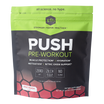
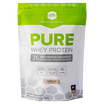
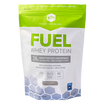
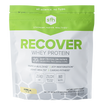
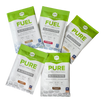
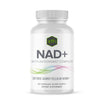
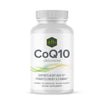
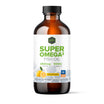
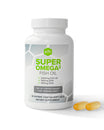
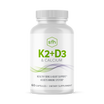
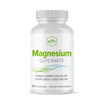
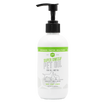
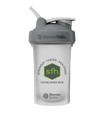

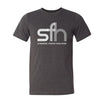




Leave a comment
This site is protected by hCaptcha and the hCaptcha Privacy Policy and Terms of Service apply.